Oceania is a breathtakingly beautiful region that encompasses the Pacific Ocean and its many islands. From the pristine beaches of Australia to the rugged landscapes of New Zealand and the idyllic islands of the South Pacific, there are countless reasons why Oceania should be on every traveller’s bucket list. In this article, we’ll explore the top 10 reasons to visit Oceania.
Natural Beauty
Oceania is home to some of the world’s most spectacular landscapes, including the Great Barrier Reef, Uluru (Ayers Rock), Milford Sound, and many more. From tropical rainforests to snow-capped mountains, there’s something for everyone in this diverse region.
Unique Wildlife
Oceania is home to some of the world’s most unique and fascinating wildlife, including kangaroos, koalas, wallabies, kiwis, and the elusive Tasmanian devil. You can even swim with whale sharks and dolphins in the waters off Australia and New Zealand.
World-Class Cities
Oceania boasts several world-class cities, including Sydney, Melbourne, Auckland, and Brisbane. These vibrant and cosmopolitan cities offer plenty of opportunities for shopping, dining, and entertainment, as well as cultural attractions like museums, art galleries, and theatres.
Indigenous Culture
Oceania is home to many indigenous cultures, including the Maori of New Zealand, the Aboriginal peoples of Australia, and the many Polynesian cultures of the South Pacific. Visitors can learn about these rich and ancient cultures through art, music, dance, and storytelling.
Adventure Sports
Oceania is a playground for adventure sports enthusiasts, offering everything from surfing and diving to hiking and skiing. Whether you’re looking for an adrenaline rush or a more leisurely outdoor experience, Oceania has it all.
Food and Wine
Oceania is renowned for its delicious food and wine, with fresh seafood, exotic fruits, and world-class wines all on offer. From the wineries of Australia’s Hunter Valley to the gourmet restaurants of Auckland, Oceania is a foodie’s paradise.
Beaches
With thousands of miles of coastline, Oceania is home to some of the world’s most beautiful beaches. From the iconic Bondi Beach in Sydney to the secluded coves of Fiji, there’s a beach for every taste and budget.
Festivals and Events
Oceania hosts a variety of festivals and events throughout the year, from the Sydney Gay and Lesbian Mardi Gras to the Auckland Arts Festival. These events offer visitors a chance to experience the region’s vibrant cultural scene and meet locals.
Luxury Travel
Oceania is home to some of the world’s most luxurious hotels and resorts, from the iconic Sydney Opera House to the exclusive private islands of Fiji. Whether you’re looking for a romantic getaway or a family vacation, there’s no shortage of luxury travel options in Oceania.
Sustainable Tourism
Oceania is committed to sustainable tourism practices, with many hotels, tour operators, and attractions working to minimise their environmental impact. Visitors can feel good about supporting these efforts while enjoying the region’s natural beauty and cultural riches.
In conclusion, Oceania is a truly special region of the world that offers something for everyone. From its stunning natural beauty to its rich cultural heritage, there are countless reasons to visit Oceania. So why not start planning your trip today and
The most commonly visited sights in Oceania
Oceania is a vast region with a diverse range of sights and attractions. However, there are some places that are more commonly visited by travellers due to their popularity and iconic status. Here are some of the most commonly visited sights in Oceania:
- Sydney Opera House, Australia – One of the most recognizable buildings in the world, the Sydney Opera House is a UNESCO World Heritage Site and an iconic symbol of Australia. Visitors can take a tour of the building, attend a performance, or simply enjoy the stunning views of the harbour.
- Great Barrier Reef, Australia – The Great Barrier Reef is the world’s largest coral reef system, stretching for over 2,300 kilometres along the coast of Queensland. Visitors can snorkel or dive among the colourful coral and marine life, or take a scenic flight over the reef.
- Uluru (Ayers Rock), Australia – Uluru is a sacred site for the local Anangu people and a stunning natural wonder. Visitors can take a guided tour to learn about the cultural significance of the rock and its surrounding landscapes, or simply watch the sunset over this iconic landmark.
- Milford Sound, New Zealand – Milford Sound is a spectacular fjord located in New Zealand’s Fiordland National Park. Visitors can take a boat cruise to explore the dramatic cliffs and waterfalls, or hike the nearby trails for stunning views of the surrounding mountains.
- Franz Josef Glacier, New Zealand – Franz Josef Glacier is a stunning glacier located on New Zealand’s South Island. Visitors can take a guided tour to explore the glacier and its surrounding landscapes, or simply enjoy the views from a scenic helicopter or plane flight.
- Bondi Beach, Australia – Bondi Beach is one of Australia’s most famous beaches, known for its golden sands and turquoise waters. Visitors can swim, surf, or simply soak up the sun on the beach, or explore the nearby cafes, restaurants, and shops.
- Queenstown, New Zealand – Queenstown is a picturesque town located on the shores of Lake Wakatipu, surrounded by the stunning mountains of New Zealand’s Southern Alps. Visitors can enjoy a range of outdoor activities, including skiing, hiking, and bungee jumping, or simply relax and enjoy the scenery.
- Rotorua, New Zealand – Rotorua is a geothermal wonderland located in the heart of New Zealand’s North Island. Visitors can explore the bubbling mud pools, geysers, and hot springs, or learn about the local Maori culture and traditions.
- The Whitsunday Islands, Australia – The Whitsunday Islands are a group of 74 islands located off the coast of Queensland, known for their stunning beaches and clear turquoise waters. Visitors can take a boat cruise or yacht charter to explore the islands and their many secluded coves and bays.
- Coral Coast, Fiji – The Coral Coast is a stunning stretch of coastline on the island of Viti Levu in Fiji, known for its beautiful beaches and coral reefs. Visitors can swim, snorkel, or dive among the colourful marine life, or simply relax and enjoy the tropical scenery.
These are just a few of the many commonly visited sights in Oceania. Whether you’re interested in natural wonders, cultural attractions, or outdoor adventures, there’s something for everyone in this stunning region of the world.
The History of Oceania
The history of Oceania is a complex and fascinating story that spans thousands of years. The region encompasses the Pacific Ocean and its many islands, including Australia, New Zealand, and the many islands of the South Pacific. Here is an overview of the history of Oceania:
Early Settlements and Migration
The first humans are believed to have arrived in Australia over 60,000 years ago, while the first settlers of New Zealand arrived around 1,000 years ago from Polynesia. The early settlers of Oceania were skilled navigators and seafarers who developed unique cultures and traditions based on their environments.
European Exploration and Colonisation
European explorers first arrived in Oceania in the 16th century, with Dutch explorers landing on the northern coast of Australia and Spanish explorers visiting the Philippines and other islands of the South Pacific. In the late 18th century, British explorers arrived in Australia and claimed it as a British colony. New Zealand was also colonised by the British in the mid-19th century.
Impact of Colonialism
The impact of colonialism on Oceania was profound, with many indigenous cultures and traditions being suppressed or lost altogether. The colonisers brought with them new technologies, religions, and political systems, which had both positive and negative effects on the region. In Australia, the indigenous population was subject to forced removal from their lands and other forms of discrimination, which continues to have a lasting impact today.
Independence and Nation-Building
Many of the islands of the South Pacific gained independence from colonial powers in the mid-20th century, with Fiji and Tonga becoming independent in 1970 and 1975, respectively. Papua New Guinea gained independence from Australia in 1975, while New Zealand remains a self-governing territory. Today, the region is home to a diverse range of nations and cultures, with each country developing its own unique identity and traditions.
Environmental and Social Issues
Oceania faces a range of environmental and social challenges, including climate change, overfishing, and deforestation. Indigenous communities continue to face discrimination and marginalisation in some areas, while others are working to preserve their cultures and traditions. The region is also home to a diverse range of flora and fauna, many of which are endangered or threatened.
In conclusion, the history of Oceania is a complex and fascinating story that has shaped the region and its people over thousands of years. From early settlements and colonisation to independence and nation-building, the region has experienced a range of events and challenges that continue to shape its identity today.
The Geography of Oceania
Oceania is a vast region that encompasses the Pacific Ocean and its many islands. The region covers an area of over 8.5 million square kilometres and is divided into three subregions: Australia and New Zealand, Melanesia, and Polynesia. Here is an overview of the geography of Oceania:
Australia and New Zealand
Australia and New Zealand are the largest and most developed countries in Oceania. Australia is the world’s sixth-largest country and covers an area of over 7.6 million square kilometres. It is home to a diverse range of landscapes, including the Great Barrier Reef, the Australian Outback, and the Snowy Mountains. New Zealand, on the other hand, is a group of islands located to the southeast of Australia. It covers an area of around 268,000 square kilometres and is known for its stunning natural landscapes, including the Southern Alps, Fiordland National Park, and Rotorua’s geothermal wonders.
Melanesia
Melanesia is a subregion of Oceania that includes the islands of Papua New Guinea, Fiji, Vanuatu, the Solomon Islands, and New Caledonia. The name “Melanesia” means “black islands” and refers to the dark skin of the indigenous people of the region. The islands of Melanesia are known for their stunning natural beauty, including lush rainforests, coral reefs, and volcanic landscapes.
Polynesia
Polynesia is a subregion of Oceania that includes the islands of Samoa, Tonga, French Polynesia, the Cook Islands, and the Hawaiian Islands. The name “Polynesia” means “many islands” and refers to the vast number of islands that make up the region. The islands of Polynesia are known for their stunning beaches, crystal-clear waters, and unique cultures and traditions.
Climate
The climate of Oceania varies widely depending on the location. Australia and New Zealand have a temperate climate, with hot summers and cool winters. The islands of Melanesia and Polynesia have a tropical climate, with high temperatures and heavy rainfall. The region is also prone to natural disasters, including cyclones, earthquakes, and volcanic eruptions.
In conclusion, the geography of Oceania is diverse and varied, with a range of landscapes, climates, and natural wonders. From the rugged landscapes of Australia and New Zealand to the tropical islands of Melanesia and Polynesia, the region offers something for everyone.
Cuisine of Oceania
The cuisine of Oceania is as diverse and unique as the region itself, with a mix of traditional and modern dishes influenced by the indigenous cultures, European colonisation, and Asian migration. Here are some of the most popular dishes and ingredients in the cuisine of Oceania:
Seafood
Oceania is surrounded by the Pacific Ocean, so it’s no surprise that seafood plays a major role in the cuisine. Some popular seafood dishes include fish and chips in Australia and New Zealand, bouillabaisse in New Caledonia, and kokoda (a raw fish salad marinated in lime juice and coconut cream) in Fiji.
Meat
Meat is also an important part of the cuisine, with beef, lamb, and pork being popular choices. In Australia, a traditional dish is the meat pie, while New Zealand is known for its roast lamb. In Hawaii, kalua pig (slow-roasted pork) is a popular dish.
Tropical fruits
Oceania is home to a range of tropical fruits, including bananas, papayas, pineapples, and mangoes. These fruits are often used in desserts and drinks, such as the popular pina colada cocktail.
Root vegetables
Taro is a staple root vegetable in many Pacific Island cultures, used in dishes such as taro chips and poi (a traditional Hawaiian dish made from mashed taro). Other popular root vegetables include yams, sweet potatoes, and cassava.
Asian flavours
Due to the migration of Asian communities to the region, Asian flavours have also become an important part of the cuisine. In Fiji, for example, curries and other Indian dishes are popular, while in Hawaii, dishes such as sushi and poke (raw fish salad) are commonly found.
Wine and beer
Oceania is home to many vineyards and breweries, producing a range of high-quality wines and beers. Australia and New Zealand are known for their wines, while Fiji and Samoa produce popular beers.
Desserts
Desserts in Oceania often incorporate tropical fruits and coconut, such as the Australian lamington cake (chocolate-coated sponge cake covered in coconut) and the Samoan fa’ausi (coconut and rice flour pudding).
In conclusion, the cuisine of Oceania is a unique blend of traditional and modern dishes influenced by the region’s diverse cultures and ingredients. From seafood and meat to tropical fruits and Asian flavours, the cuisine offers a taste of the rich and varied culture of Oceania.
What’s the Weather like in Oceania
The weather in Oceania is diverse and varies depending on the location, season, and altitude. The region encompasses a vast area, from the tropical islands of the South Pacific to the temperate climates of Australia and New Zealand. Here is an overview of the weather in Oceania:
Australia and New Zealand
Australia and New Zealand have a range of climates, from the tropical north to the cooler south. In general, Australia has a warm and dry climate, with hot summers and mild winters. The northern parts of the country experience a tropical climate, with high humidity and rainfall during the wet season. New Zealand has a temperate maritime climate, with mild temperatures and high rainfall throughout the year.
Melanesia
The islands of Melanesia have a tropical climate, with high temperatures and high humidity throughout the year. The region experiences two distinct seasons: the wet season, which runs from December to April, and the dry season, which runs from May to November. The islands are prone to cyclones and typhoons during the wet season.
Polynesia
The islands of Polynesia also have a tropical climate, with high temperatures and humidity throughout the year. The region experiences a wet season from November to April, and a dry season from May to October. The islands are also prone to tropical cyclones during the wet season.
Environmental Factors
Oceania is home to a range of environmental factors that can affect the weather, such as El Nino and La Nina, which can cause changes in ocean temperatures and rainfall patterns. The region is also prone to natural disasters, including cyclones, earthquakes, and volcanic eruptions, which can have a significant impact on the weather.
When’s the best time to visit Oceania
The best time to visit Oceania depends on several factors, including your destination, budget, and travel preferences. Here is an overview of the best time to visit Oceania based on location:
Australia and New Zealand
The best time to visit Australia and New Zealand is during their respective summer months, from December to February. This is when the weather is warm and sunny, making it ideal for outdoor activities like hiking, swimming, and surfing. Keep in mind that this is also the peak tourist season, so prices for flights and accommodations may be higher.
Melanesia
The best time to visit Melanesia is during the dry season, which runs from May to October. This is when the weather is cooler and drier, making it easier to explore the islands without being affected by heavy rains. The wet season, which runs from November to April, is hot and humid, with high chances of tropical storms and cyclones.
Polynesia
The best time to visit Polynesia is also during the dry season, which runs from May to October. This is when the weather is cooler and drier, making it ideal for outdoor activities like swimming and snorkelling. The wet season, which runs from November to April, can be hot and humid, with high chances of tropical storms and cyclones.
In general, the shoulder season (the time between the high and low seasons) can be a good time to visit Oceania. During the shoulder season, you can still enjoy good weather and fewer crowds, but with lower prices for flights and accommodations. Additionally, it’s important to consider any festivals or events that may be taking place during your trip, as these can also affect the availability and cost of accommodations.
The Culture of Oceania
The culture of Oceania is as diverse and unique as the region itself, shaped by the indigenous cultures, European colonisation, and migration from Asia and other parts of the world. Here is an overview of the culture of Oceania:
Indigenous Cultures
The indigenous cultures of Oceania are some of the oldest in the world, with a rich history of art, music, and storytelling. The cultures of the region vary widely, from the Maori culture of New Zealand to the Aboriginal cultures of Australia and the Polynesian cultures of the South Pacific. Traditional customs and beliefs are still a significant part of indigenous cultures, with many communities working to preserve their languages and traditions.
European Influences
European colonisation of Oceania had a significant impact on the culture of the region, with European languages, religions, and political systems being introduced. The impact of colonisation was not uniformly positive, however, with many indigenous cultures and traditions being suppressed or lost altogether. Today, European influences are still present in the region, with many countries having close ties to their former colonial powers.
Asian Influences
Migration from Asia has also had a significant impact on the culture of Oceania, with Asian languages, religions, and cuisines becoming increasingly popular. In Fiji, for example, Indian communities have introduced new dishes and customs, while in Hawaii, Japanese migration has influenced the local cuisine and art.
Arts and Literature
The arts and literature of Oceania are diverse and often reflect the rich cultural traditions of the region. Many indigenous cultures have a strong tradition of art, with carvings, paintings, and other forms of artwork often featuring religious and cultural themes. Literature in the region is also diverse, with a range of writers exploring themes related to identity, migration, and cultural heritage.
Music and Dance
Music and dance are an important part of the culture of Oceania, with many indigenous cultures having their own unique styles and instruments. The hula dance of Hawaii, the Maori haka of New Zealand, and the Fijian meke dance are just a few examples of the vibrant musical and dance traditions of the region.
The importance of sport in OCeania
Sport plays an important role in the culture of Oceania, with many communities and nations embracing a range of sports as a way to connect with their cultural heritage, promote health and fitness, and build social cohesion. Here are some of the key reasons why sport is important in Oceania:
Cultural heritage
Sport is an important way for many indigenous communities in Oceania to connect with their cultural heritage. Many traditional sports and games, such as the Maori game of ki-o-rahi in New Zealand and the Fijian game of vakamiti, have been passed down through generations and continue to be played today.
National pride
Sport is also a source of national pride in many countries in Oceania, with successful athletes and teams often celebrated as heroes. The Australian cricket team and the New Zealand All Blacks rugby team are just two examples of sports teams that are revered in their respective countries.
Health and fitness
Sport is an important way to promote health and fitness in Oceania, where rates of obesity and other lifestyle-related illnesses are high. Many communities and governments in the region are promoting sports and physical activity as a way to improve health outcomes.
Social cohesion
Sport is also an important way to build social cohesion and bring communities together. In many areas of Oceania, sports clubs and teams are an important part of community life, providing opportunities for social interaction and connection.
Economic benefits
Sport can also bring economic benefits to the region, through tourism, sponsorship, and other commercial activities. Major sporting events such as the Australian Open tennis tournament and the Rugby World Cup have a significant impact on the local economy.
Unveiling Jakarta: A Thrilling 3-Day Journey through Indonesia’s Dynamic Capital
Unveiling the Miraculous Health Benefits of Turmeric
Top 10 Fascinating Reasons to Explore Argentina’s Rich Tapestry
The Healing Power of Ginger: 7 Ways This Spicy Root Boosts Your Well-being
Unlocking Wellness: 7 Ways Shoulder Stand Pose Transforms Your Health
10 Reasons to Visit Tunisia: Unveiling the Treasures of North Africa
Relieving back pain. 5 Yoga Poses for Perfect Posture and a Pain free back
Unraveling the Mystique of Beijing: A 3-Day Adventure through Time and Flavor
Unlocking the Hidden Depths of Yoga Nidra: The Power of Conscious Relaxation
10 Enchanting Reasons to Visit Iceland: Experience Nature’s Wonderland
Unveiling the Enchanting World of Scottish Distillery Tours
10 Reasons to Visit Portugal: Discover the Enchanting Charms of This Iberian Gem
South Africa’s Top 10. Unmissable Reasons to Embark on a South African Adventure
Unraveling the Enchanting Essence of Los Angeles: A 3-Day Escapade
7 Ways Practicing Mindfulness Can Improve Your Sleep Quality
Mastering the Triathlon Transitions: 10 Tips for Quick and Efficient Changes
Exploring Johannesburg: A Vibrant City Steeped in History
Unveiling Denpasar: Immersive Travel Guide to Bali’s Enchanting Capital
Boost Your Immune System Naturally: 10 Tips and Strategies
Kayak Fishing: 10 Tips and Tricks for a Successful Trip
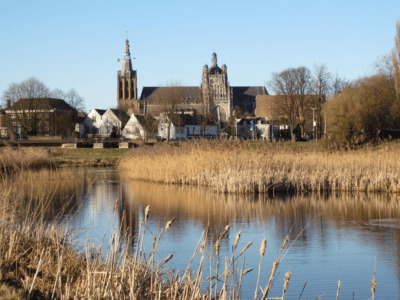
Discover the Vibrant Melting Pot: A 3-Day Adventure in Montreal

Traveling with Pets: 10 Tips for a Stress-Free Trip
Sleep and Weight Management: How Sleep Influences Appetite and Metabolism
Triathlon Wetsuit Buyer’s Guide: Enhance Performance in the Water

Turin: Unveiling the Rich Heritage and Delights of Italy’s Hidden Gem

Unveiling Vienna: A Journey through History, Culture, and Culinary Delights
The Sahara Desert: Journeying Across the World’s Largest Hot Desert
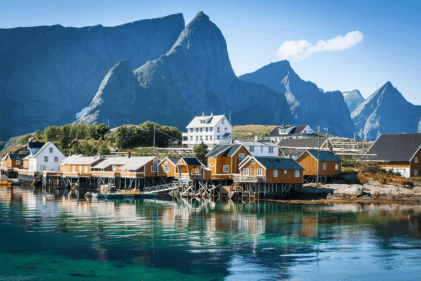
Hiking and Wildlife in Alaska: Exploring America’s Last Frontier
Kayaking in the Wild: 7 Essential Tips for Surviving in Remote Locations
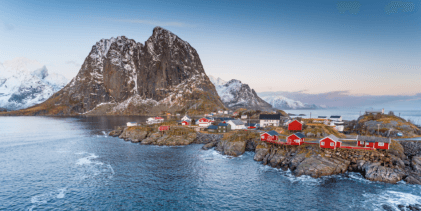
Vancouver Unveiled: A Journey through History, Culture, and Adventure
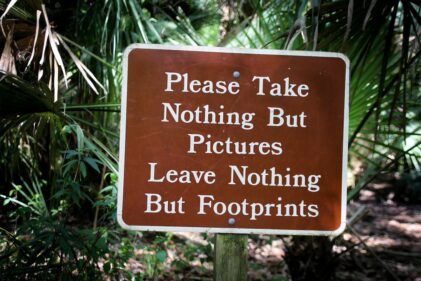
Exploring the Charms of Montevideo: A Vibrant Journey into Uruguay’s Capital
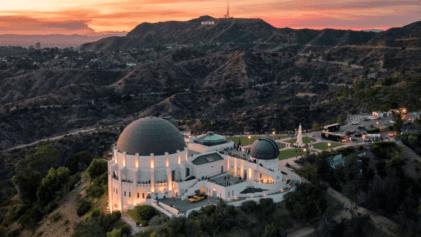
Exploring the Vibrant City of Melbourne: A Comprehensive Travel Guide
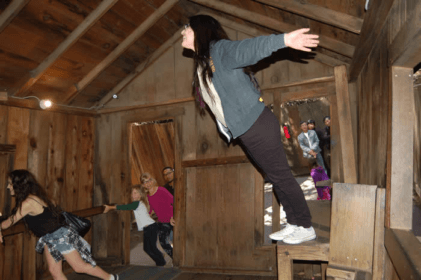
Exploring the Vibrant City of Manila: A Traveler’s Guide
Exploring the Vibrant Heart of Spain: A 3-Day Adventure in Madrid

Exploring the Majestic Pink City: A Comprehensive Guide to Travelling to Jaipur

Exploring the Enchanting Charm of Hanoi: A 3-Day Itinerary, Travel Tips, and Hidden Gems
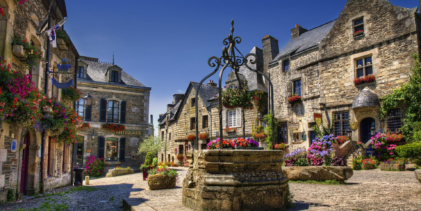
Exploring the Charms of Hamburg: A Vibrant City Filled with History, Culture, and Culinary Delights
Exploring the Enchanting Beauty of Edinburgh: A Journey Through History, Culture, and Culinary Delights
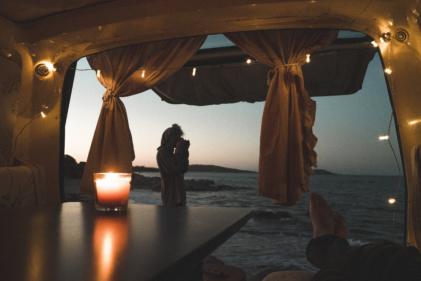
Exploring the Renaissance Jewel: A Comprehensive Guide to Travelling to Florence
Unlocking Hip Flexibility and Relieving Lower Back Pain: The Power of Pigeon Pose
The 10 Best Triathlon Bags for Organized Athletes
Triathlon Gear Buyer’s Guide: Essential Equipment for Success
Exploring the Beauty of Cancun: A Tropical Paradise Awaits!
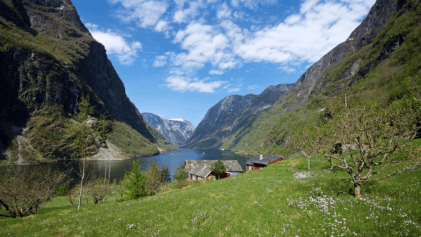
10 Essential Tips for Traveling with a Disability: Ensuring a Smooth and Enjoyable Journey
Sun, Sand, and Serenity: Relaxing in the Whitsunday Islands
The Influence of Social Media on Mental Health: Challenges and Solutions
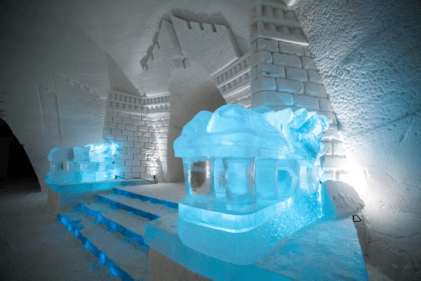
The 7 Safest Places to Visit in Africa: Exploring the Continent’s Hidden Gems
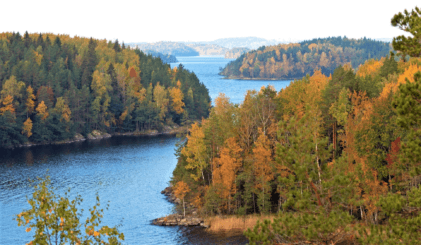
The 10 Unforgettable Travel Experiences to Add to Your Bucket List
Hidden Gems: 20 Lesser-Known Destinations Worth Exploring
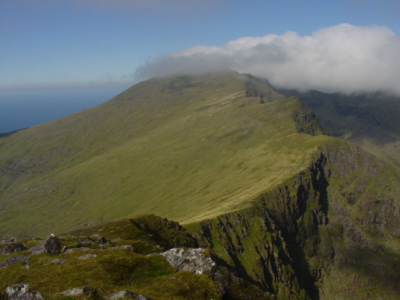
10 World’s Most Scenic Drives: Discover Breathtaking Landscapes on the Road
Exploring the Charms of Geneva: A Guide to the Picturesque Swiss City

Uncovering the Beauty of Stockholm: A Scandinavian Gem
Breaking the Stigma: Promoting Mental Health Awareness in Society
A Taste of Tuscany: Exploring Florence, Siena, and Chianti
The Role of Nutrition in Promoting Healthy Sleep
Triathlon Bike Buyer’s Guide: Selecting the Right Ride for Speed and Comfort
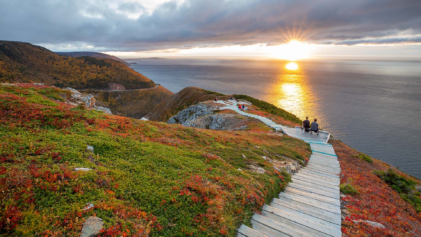
A Guide to the World’s 10 Best Beaches
Supporting Loved Ones with Mental Health Challenges: 10 Tips for Caregivers
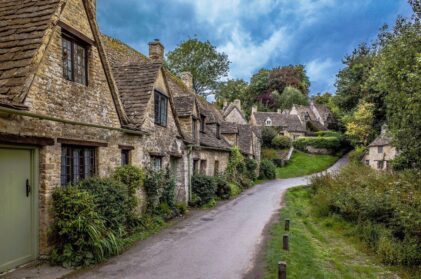
A Journey Through the Scottish Highlands: Majestic Landscape
10 Beginner-Friendly Yoga Poses for a Healthy Start to Your Practice

Cape Winelands: Indulging in South Africa’s Finest Wines
The 5 Ways Meditation and Mindfulness Improve Sleep Quality
Unveiling the Secret to Lasting Happiness: 7 Proven Strategies for a Fulfilling Life
Choosing the Right Gear for a Triathlon: 8 Essential Triathlon Gear Tips for Success
The Delights of Prague’s Christmas Markets: Festive Magic in the Czech Republic
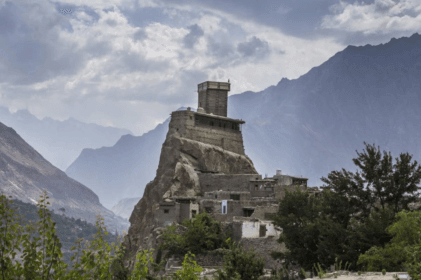
A Historic Sojourn: Discovering Colonial Williamsburg
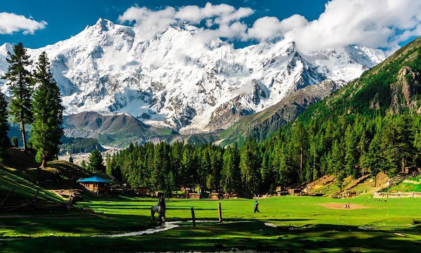
Lost in the Megalopolis: Navigating Asian Metropolises
The Tea Trails: A 5 Step Journey through Asian Tea Cultures
The Power of Probiotics: How These 7 Gut-Boosting Heroes Bolster Your Health and Immunity
Natural Skincare Secrets: 7 Tips for Radiant and Healthy Skin
Mindfulness and Resilience: How Mindfulness Can Help Build Resilience in the Face of Adversity

Experiencing the Northern Lights in Iceland: A Natural Wonder
Sleep Disorders in Children: Recognizing and Managing Common Issues
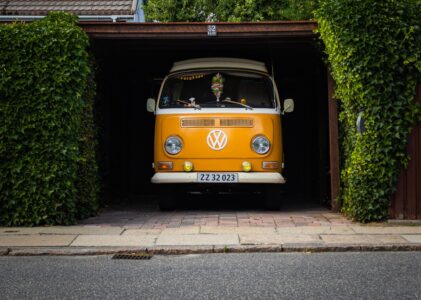
Discovering the Stunning Fiordland National Park, New Zealand: Exploring Nature’s Masterpiece

Discovering the Stunning Fiordland National Park, New Zealand: Exploring Nature’s Masterpiece
Sossusvlei: Capturing the Dramatic Dunes of Namibia
The Magnificent Cinque Terre: Coastal Beauty in Italy
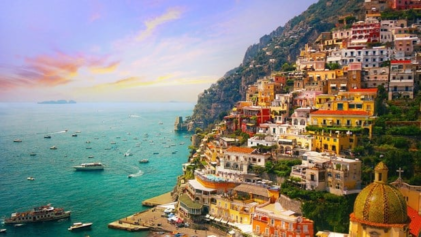
Exploring the Greek Islands: Santorini, Mykonos, and Crete
Understanding the Gut-Brain Connection: Gut Health and Mental Wellbeing
The Role of Sleep in Athletic Performance and Recovery: 5 Reasons Why a Good Night’s Rest is Crucial for Athletes
7 Yoga Poses for Calming the Mind and Reducing Stress
How to Plan the Perfect Family Vacation: 10 Expert Tips for an Unforgettable Getaway

10 Essential Tips to Prepare for a Long-Haul Flight

A Guide to the World’s Most Beautiful Waterfalls: Discover the Natural Wonders
South America’s Hidden Treasures: 10 Spectacular Gems Waiting to be Discovered
The Art of Herbal Tea Blending for Health and Wellness
The Ultimate Guide to Effective Treatment for ADHD: 10 Proven Strategies to Thrive with Attention Deficit Hyperactivity Disorder
How to Determine if You Have ADHD: 8 Key Signs to Look Out For
How ADHD is Diagnosed: A Comprehensive Guide
Is It OK to Only Use Yoga for Exercise? 5 Key Points to Consider
Can Yoga Help with Weight Loss?? 7 Ways Yoga Can Transform Your Body
How Often Should I Do Yoga? Find the Perfect Balance for Your Practice
Road Trip to the Rockies: Exploring Colorado’s Scenic Highways
5 Hip-Opening Yoga Poses for Greater Flexibility and Reduced Tension
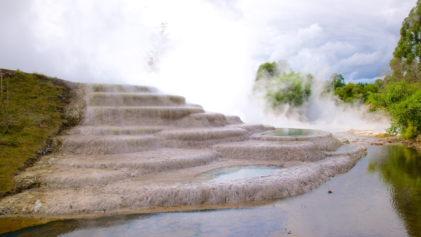
Cruising the Amazon: Wildlife and Wonder in South America
The 10 Most Impressive Archaeological Sites to Visit Around the World
Bedtime Routine: 10 Techniques for Preparing the Mind and Body for Sleep
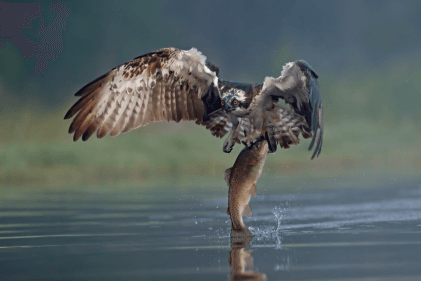
The 10 Best Destinations for a Thrilling Skiing or Snowboarding Trip
10 Tips for Staying Healthy While Traveling: Your Guide to a Fit and Happy Journey
Understanding Mindful Gardening: Techniques for Finding Peace and Joy in the Garden
